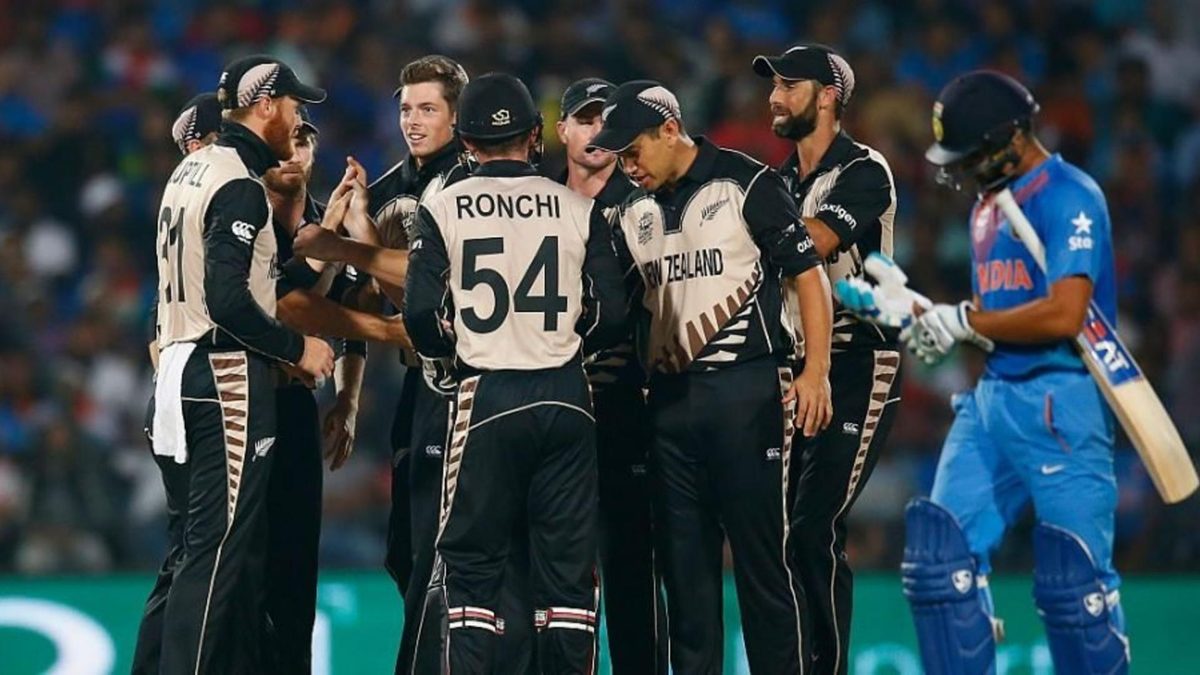
Yas Rana revisits the still inexperienced Mitchell Santner’s brilliant four-for against India in the 2016 Men’s T20 World Cup, which set the tone for New Zealand’s success in the tournament.
Wisden’s decade in review series is brought to you in association with Perry, designers of distinctive club blazers made in Yorkshire since 1946
Mitchell Santner 4-11
India v New Zealand
Nagpur
2016 T20 World Cup, Match 13
March 15, 2016
The spell
One of the more outwardly audacious team selections in recent memory. In Kane Williamson’s first match as New Zealand’s full-time captain following the retirement of Brendon McCullum, he took one look at the Nagpur pitch in their opening game of the 2016 T20 World Cup and thought ‘who needs seamers anyway?’
Few assessments of a pitch have been so confident. Predicting significant turn, Williamson made the call to omit Tim Southee (his country’s second-leading T20I wicket-taker), Trent Boult (New Zealand’s new-ball star in their run to the previous year’s World Cup final) and Mitchell McClenaghan (New Zealand’s most used bowler in T20Is in the two years leading up to the World T20) from the XI. Instead, he opted for the wily off-spin of Nathan McCullum, the mystery option in the form of Ish Sodhi’s leg-breaks, the sensible left-arm spin of Mitchell Santner and the raw pace of Adam Milne. Talk about making a statement.
Santner, almost the anti-McCullum in his strictly orthodox approach to all aspects of the game, was entrusted with containing the most complete batting unit on the planet in home conditions in just his 15th professional T20 game. He wasn’t given much to work with either. After opting to bat first, New Zealand could only muster 126 first-innings runs. India, boasting a formidable top eight of Rohit, Dhawan, Kohli, Raina, Yuvraj, Dhoni, Pandya and Jadeja, were clear favourites.
In four one-over bursts, Santner was quite simply brilliant. Thrown the ball in the third over of the chase, with Dhawan already back in the pavilion, Santner made an immediate impact. Within five balls, he’d dismissed Sharma – beaten by Santner’s flight and turn – and Raina – totally mistiming one that stuck in the pitch – and New Zealand had India reeling on 12-3.
[breakout id=”0″][/breakout]
He returned in the 10th and struck again, this time firing in a dart that snuck through Pandya’s defences. At this point, Santner had figures of 1.3-0-3-3 and India were 42-6.
Brought off again, Santner returned with India needing a shade over 10 runs an over with arguably the greatest chaser in the history of white-ball cricket in Dhoni at the crease. Exhibiting impressive guile, Santner belied his years smartly making changes to his angle and pace and restricted Dhoni and Ashwin to just four singles off India’s 14th over.
With the game realistically out of India’s reach, Santner returned in the 18th over. After being punished by Dhoni for a rare drag down first up, Santner bounced back admirably. After beating his outside edge on the following delivery, Santner had his man courtesy of a fine Nathan McCullum catch three balls later. He finished with 4-0-11-4 – the third-best figures of the tournament. A fine evening’s work from the unassuming youngster.
"In true Australian spirit, she would put her body on the line to carry her team to their sixth World Cup title."@axk92 on an injury-defying World Cup-winning spell from @EllysePerry.https://t.co/8LsdCz9Rg6
— Wisden (@WisdenCricket) December 6, 2019
The ball
2.2 Rohit Sharma st Luke Ronchi b Mitchell Santner 5(7)
A left-arm spinner’s dream. Around the wicket to the right-handed Rohit, tossed up, angled in, pitching just outside off, Sharma advances down looking to shovel the ball into the leg side for a single. Pitching on a good length, Sharma doesn’t quite get to the pitch of the ball. He stands totally helpless as the ball turns sharply against the angle, away from him. Not even a fumble from Luke Ronchi behind the stumps can deny Santner his man. From the second ball Santner has bowled in a global tournament for his country, he has produced a ball bowlers spend most of their careers fantasising about.







